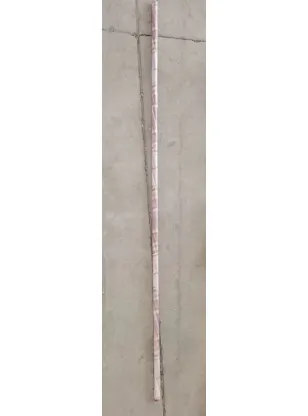loading...
- No. 9, Xingyuan South Street, Dongwaihuan Road, Zaoqiang County, Hengshui, Hebei, China
- admin@zjcomposites.com
- +86 15097380338
- Welcome to visit our website!
gfrp bars price
Understanding the Pricing of GFRP Bars What You Need to Know
Glass Fiber Reinforced Polymer (GFRP) bars have garnered attention in recent years as an innovative solution for various construction applications. With their unique properties, including corrosion resistance, lightweight composition, and high tensile strength, GFRP bars are becoming an attractive alternative to traditional steel reinforcement bars. However, a crucial factor that influences their adoption is the pricing. In this article, we will explore the factors affecting the prices of GFRP bars and their implications for industries that utilize them.
What Are GFRP Bars?
GFRP bars are composite materials made from a polymer matrix reinforced with glass fibers. They are designed to provide strength while being resistant to environmental degradation, making them ideal for use in harsh conditions, such as coastal areas or chemical plants. Due to their non-corrosive nature, GFRP bars significantly reduce the maintenance costs associated with traditional steel reinforcements in concrete structures.
Factors Influencing GFRP Bar Prices
1. Raw Material Costs The primary components of GFRP bars are fiberglass and resin materials. The prices of these raw materials fluctuate based on market demand, production costs, and global supply chain dynamics. For instance, if there is an increase in demand for fiberglass in other industries, such as automotive or aerospace, it could lead to higher prices for GFRP bars.
2. Manufacturing Processes The production of GFRP bars requires specialized manufacturing techniques, such as pultrusion, filament winding, or resin infusion. The complexity of these processes can significantly impact production costs, which, in turn, affects the retail price of the final product. Companies that invest in advanced technologies may be able to produce GFRP bars more efficiently, potentially lowering prices.
3. Size and Specification The dimensions and specifications of GFRP bars also play a critical role in their pricing. Custom sizes or specific performance characteristics may require tailored manufacturing solutions, thus driving up the cost. Additionally, standard sizes are usually available at competitive prices due to economies of scale.
gfrp bars price

4. Geographical Factors The location of production facilities and proximity to construction sites can influence shipping costs and, ultimately, pricing. Companies that source GFRP bars from overseas manufacturers might face higher transportation fees, leading to increased prices. Conversely, local production can help reduce costs and make GFRP bars more competitive against steel reinforcements.
5. Market Demand As awareness of the advantages of GFRP bars continues to grow, market demand is increasing. This demand can lead to changing prices, particularly as more construction projects consider sustainability and long-term durability. When GFRP bars become more widely accepted in standard construction practices, economies of scale may further reduce their prices.
6. Competition The market for construction materials is fiercely competitive. As more companies enter the GFRP bar market, competitive pricing strategies may become commonplace. This competition can drive prices down, making GFRP bars more accessible to a broader range of customers.
The Cost-Benefit Analysis
While GFRP bars may initially appear more expensive than traditional steel reinforcement bars, a comprehensive cost-benefit analysis often reveals significant long-term savings. The corrosion resistance and durability of GFRP bars lead to reduced maintenance and replacement costs. Moreover, their lightweight nature can result in lower transportation and handling costs on construction sites, potentially offsetting the higher initial purchase price.
Understanding the total lifecycle cost is imperative when evaluating the true value of GFRP bars. Construction projects in corrosive environments, in particular, stand to benefit substantially from using GFRP, ultimately justifying the initial investment.
Conclusion
GFRP bars represent a promising development in construction materials, marrying innovation with practicality. While the pricing of GFRP bars is influenced by multiple factors, including raw material costs, manufacturing processes, and market demand, the benefits they offer can outweigh the costs in the long run. As the construction industry shifts towards more sustainable and durable materials, GFRP bars are likely to become an increasingly common choice, making it essential for industry professionals to understand their pricing dynamics. With continued advancements in technology and growing demand, GFRP bars may soon be at the forefront of modern construction practices.
-
The Rise of FRP Profiles: Strong, Lightweight, and Built to LastNewsJul.14,2025
-
SMC Panel Tanks: A Modern Water Storage Solution for All EnvironmentsNewsJul.14,2025
-
GRP Grating: A Modern Solution for Safe and Durable Access SystemsNewsJul.14,2025
-
Galvanized Steel Water Tanks: Durable, Reliable, and Ready for UseNewsJul.14,2025
-
FRP Mini Mesh Grating: The Safer, Smarter Flooring SolutionNewsJul.14,2025
-
Exploring FRP Vessels: Durable Solutions for Modern Fluid HandlingNewsJul.14,2025
-
GRP Structures: The Future of Lightweight, High-Performance EngineeringNewsJun.20,2025
